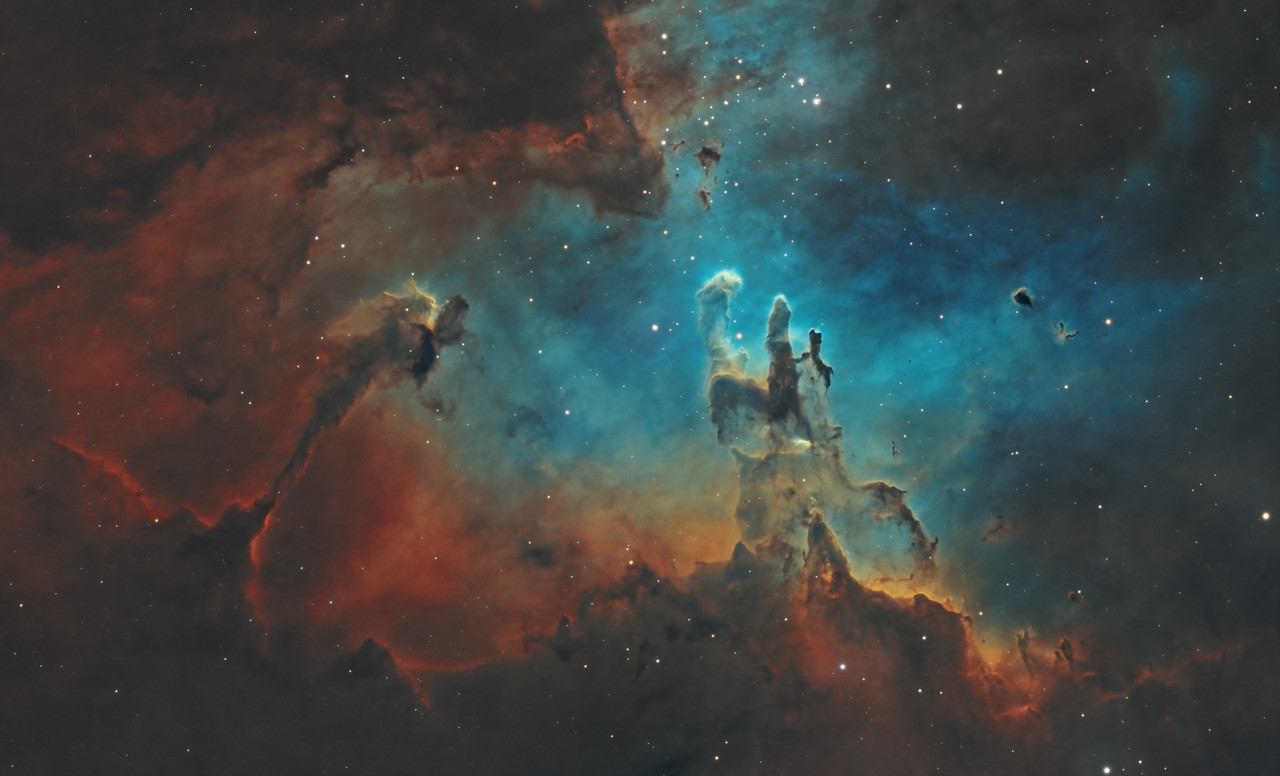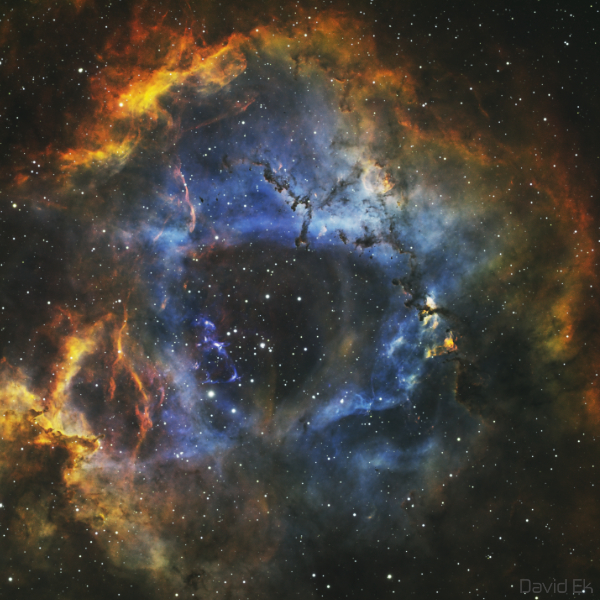Comet P12/ Pons Brooks is moving south and away from the plane of the solar system. It is therefore gaining altitude on the Western horizon each day for Southern Hemisphere imagers. In this image the comet is displaying 3 tails. An ion tail, a dust tail and an anti-tail. The latter is particularly striking and is amongst the best examples ever seen of this phenomenon. The anti-tail, apparently pointing towards the Sun, is an optical illusion. The comet sloughs off particles with a wide range of sizes. The really fine stuff is blown around by the solar wind, but the heavier material is largely unaffected and so stays close to where it was ejected by the comet, but maintaining the velocity of that ejection. Therefore it doesn't follow the comet along, especially as the comet, being pulled strongly by the Sun's gravity, maintains a curved (elliptical) trajectory. And so, behind where the comet has been, there is a curved line of coarse particles, holding to the comet's previous position, or perhaps having drifted but not too far. As the Earth passes through the plane of the comet's path, this thicker swathe of particles, changes from a diffuse curve, not so easily seen, to a thick line, where the areas of greater density are aligned behind each other.....thus we see a bright thicker line, surrounded by the diffuse and much more spread out smaller particles. Since the comet is moving south and away from the plane of the solar system, we are seeing it from behind and the broad fan of the dust tail we see reflects the narrow angle with which we are viewing the tail. In fact some of that tail can be seen above the head of the comet, showing that we really are looking through the back of it.
The bluish ion tail has tremendous structure and the linear streams leaving the nucleus quickly become disrupted as they stream away in the variable solar wind. Strikingly the tail superimposes the gorgeous small star cluster in NGC 2017, with its blue-white stars contrasting the one sparkling red one.
The head of the comet glows green due to the glow from diatomic carbon and nitrile molecules, however, again we are seeing it through the dust tail, again from behind, such that it is somewhat obscured.
Captures:
Red: 20 x 30 sec
Green: 10 x 30 sec
Blue: 10 x 30 sec
Darks: 35
Flat Darks: 35
Flats: 20
OTA: C14 EdgeHD
Lens: Hyperstar
Filters: Baader RGB 50mm round mounted f/2 optimised
Camera: ZWO ASI 6200MM
Copyright: Niall MacNeill
Wattle Flat,
NSW 2795,
Australia

https://www.flickr.com/photos/195908319 ... 765549463/

